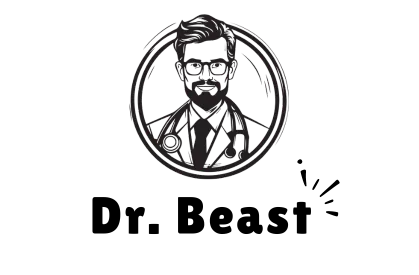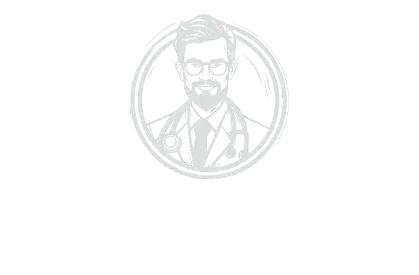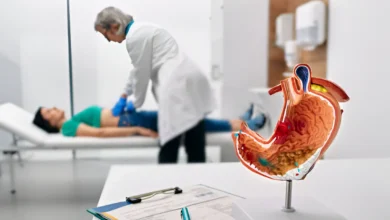Conquer Headaches : A Guide to Finding Lasting Relief!

Headaches are a universal experience, affecting people across all ages, cultures, and backgrounds. They range from mild discomfort to debilitating pain, significantly impacting quality of life and productivity. Yet, despite their prevalence, headaches remain a complex and often misunderstood medical condition. This article seeks to shed light on headaches by exploring their definition, types, prevalence, causes, symptoms, complications, and management strategies. By understanding headaches, individuals can better navigate the challenges they present and implement effective prevention and treatment measures.
Headaches are not merely a physical sensation; they reflect complex interactions within the brain and can be influenced by a myriad of factors, including lifestyle, environment, and underlying health conditions. As one of the most common health complaints, headaches account for a significant number of doctor visits and missed workdays. In this comprehensive guide, we aim to unravel the mysteries of headaches, providing readers with the knowledge to take control of their health and well-being.
♦ Definition
A headache is a pain or discomfort in the head, scalp, or neck. It can occur as a primary condition, such as a migraine or tension-type headache, or as a secondary symptom of another underlying issue, such as sinusitis or a brain tumor. Headaches vary in intensity, duration, and frequency, with some individuals experiencing occasional mild headaches, while others suffer from chronic, severe pain.
The brain itself does not feel pain, as it lacks pain receptors. Instead, headaches arise from the irritation or stimulation of pain-sensitive structures in the head and neck, such as the blood vessels, meninges, muscles, and nerves. Understanding the anatomy and physiology of headaches is essential for identifying their causes and implementing effective treatment strategies.
♦ Types of Headaches
Headaches are broadly categorized into two main types: primary and secondary headaches.
1. Primary Headaches:
These headaches are not caused by another medical condition and include:
1. Migraine: Characterized by intense, throbbing pain, often on one side of the head, accompanied by nausea, vomiting, and sensitivity to light and sound. Migraines can last from a few hours to several days and may include auras, which are visual or sensory disturbances preceding the headache.
2. Tension-type Headache: The most common type of headache, characterized by a dull, aching pain that feels like a tight band around the head. Tension headaches are often triggered by stress, poor posture, or muscle tension in the neck and shoulders.
3. Cluster Headache: A rare but extremely painful type of headache that occurs in cyclical patterns or clusters. Cluster headaches are characterized by sudden, severe pain around one eye, often accompanied by tearing, nasal congestion, and restlessness.
2. Secondary Headaches:
These headaches are symptoms of an underlying medical condition, such as:
1. Sinus Headache: Caused by inflammation or infection of the sinuses, leading to pressure and pain in the forehead, cheeks, and eyes.
2. Medication Overuse Headache: Resulting from the frequent use of headache medication, leading to a cycle of chronic headache and medication dependency.
3. Post-traumatic Headache: Occurring after a head injury, such as a concussion, and can persist for weeks or months.
4. Cervicogenic Headache: Originating from the neck, often due to poor posture, muscle tension, or cervical spine disorders.
♦ Prevalence
Headaches are among the most common neurological disorders worldwide, affecting people of all ages and backgrounds. According to the World Health Organization (WHO), it is estimated that almost half of the adult population has experienced a headache at least once in the past year. Migraines alone affect over one billion people globally, making them the third most prevalent illness in the world.
The prevalence of headaches varies based on factors such as age, gender, and geographic location. Women are more likely to experience migraines than men, possibly due to hormonal influences. Tension-type headaches are common across all age groups, while cluster headaches are more prevalent in middle-aged men.
♦ Causes & Triggers
The causes and triggers of headaches are diverse and can vary depending on the type of headache. Common causes and triggers include:
1. Genetic Predisposition: A family history of migraines or other headache disorders may increase the likelihood of experiencing headaches.
2. Hormonal Changes: Fluctuations in hormones, such as those occurring during menstruation, pregnancy, or menopause, can trigger migraines in some women.
3. Stress and Anxiety: Emotional stress and anxiety can lead to muscle tension and the release of stress hormones, contributing to tension-type headaches.
4. Dietary Factors: Certain foods and beverages, such as caffeine, alcohol, and processed foods, may trigger headaches in susceptible individuals.
5. Sleep Disturbances: Lack of sleep or irregular sleep patterns can contribute to the onset of headaches, particularly migraines.
6. Environmental Factors: Exposure to bright lights, loud noises, strong odors, or changes in weather can trigger headaches in some individuals.
7. Physical Exertion: Intense physical activity or exertion can lead to exercise-induced headaches.
8. Medication Overuse: Frequent use of pain relievers or other medications for headache management can lead to rebound headaches.
♦ Signs and Symptoms
The signs and symptoms of headaches can vary depending on the type and severity of the headache. Common symptoms include:
1. Pain Location: Headache pain can occur on one or both sides of the head, in the forehead, temples, or base of the skull.
2. Pain Quality: The pain may be throbbing, pulsating, sharp, or dull, depending on the type of headache.
3. Pain Intensity: Headache pain can range from mild discomfort to severe, debilitating pain that interferes with daily activities.
4. Associated Symptoms: Headaches may be accompanied by nausea, vomiting, sensitivity to light and sound, visual disturbances, or nasal congestion.
5. Duration: The duration of a headache can vary from a few minutes to several days, depending on the type and underlying cause.
Recognizing the specific signs and symptoms of different headache types is crucial for accurate diagnosis and effective management.
♦ Complications
While most headaches are benign and self-limiting, they can lead to complications if not properly managed. Potential complications include:
1. Chronic Headache Disorders: Frequent or severe headaches can lead to chronic headache disorders, characterized by persistent, recurring pain that significantly impacts quality of life.
2. Medication Overuse Headache: Overuse of headache medication can lead to a cycle of chronic headache and medication dependency, requiring careful management and withdrawal.
3. Emotional and Psychological Impact: Chronic headaches can contribute to anxiety, depression, and reduced quality of life, necessitating comprehensive management strategies.
4. Reduced Productivity: Headaches can lead to missed workdays, decreased productivity, and impaired daily functioning, affecting personal and professional life.
♦ When to See a Doctor
While most headaches can be managed with over-the-counter medication and lifestyle changes, it is important to seek medical attention if you experience any of the following:
-
- Sudden, severe headache (“thunderclap headache”) that reaches maximum intensity within seconds
- Headache accompanied by neurological symptoms, such as confusion, vision changes, or weakness
- Headache following a head injury
- Persistent or worsening headaches despite treatment
- Headache accompanied by fever, stiff neck, or rash
Consulting a healthcare professional can help determine the underlying cause of the headache and guide appropriate treatment and management.
♦ Diagnosis
Diagnosing headaches involves a comprehensive evaluation of the patient’s medical history, symptoms, and physical examination. The diagnostic process may include:
1. Medical History: A detailed medical history, including family history, lifestyle factors, and previous headache episodes, helps identify potential triggers and underlying causes.
2. Symptom Assessment: Healthcare providers assess the characteristics of the headache, including location, intensity, duration, and associated symptoms, to determine the type of headache.
3. Physical Examination: A thorough physical examination helps rule out underlying medical conditions that may be contributing to the headache.
4. Diagnostic Tests: In some cases, imaging studies such as MRI or CT scans may be conducted to rule out structural abnormalities or other underlying conditions.
Accurate diagnosis is essential for guiding treatment decisions and implementing effective management strategies.
♦ Treatment
The treatment of headaches depends on the type and underlying cause. Common treatment approaches include:
Medications:
1. Pain Relievers: Over-the-counter pain relievers, such as acetaminophen or ibuprofen, can help relieve mild to moderate headache pain.
2. Triptans: Prescription medications that specifically target migraines, helping to relieve pain and associated symptoms.
3. Preventive Medications: For individuals with frequent or severe headaches, preventive medications such as beta-blockers, antiepileptic drugs, or tricyclic antidepressants may be prescribed.
Lifestyle Modifications:
Adopting healthy lifestyle habits, such as regular exercise, adequate sleep, and a balanced diet, can help reduce the frequency and severity of headaches.
Stress Management:
Techniques such as relaxation exercises, meditation, or cognitive-behavioral therapy can help manage stress and reduce headache triggers.
Physical Therapy:
Physical therapy may be beneficial for individuals with tension-type headaches or cervicogenic headaches, focusing on posture correction and muscle relaxation.
Alternative Therapies:
Some individuals may benefit from alternative therapies, such as acupuncture, biofeedback, or chiropractic care, to manage headache symptoms.
Effective treatment requires a comprehensive approach, combining medication, lifestyle changes, and supportive therapies to address the underlying causes and improve overall well-being.
♦ Prevention
Preventing headaches involves identifying and avoiding triggers, adopting healthy lifestyle habits, and managing stress. Key prevention strategies include:
1. Identify Triggers: Keeping a headache diary can help identify potential triggers, such as specific foods, stressors, or environmental factors, allowing individuals to avoid or manage them effectively.
2. Maintain a Healthy Lifestyle: Regular exercise, a balanced diet, and adequate sleep are essential for overall health and can help reduce the risk of headaches.
3. Manage Stress: Incorporating stress-reduction techniques, such as yoga, meditation, or deep breathing exercises, can help prevent tension-type headaches and migraines.
4. Stay Hydrated: Drinking enough water throughout the day can prevent dehydration, a common headache trigger.
5. Limit Caffeine and Alcohol: Reducing the intake of caffeine and alcohol can help prevent headaches, particularly for individuals who are sensitive to these substances.
6. Regular Medical Check-ups: Regular visits to a healthcare provider can help monitor and manage underlying conditions that may contribute to headaches, ensuring timely intervention and prevention.
By implementing these prevention strategies, individuals can reduce the frequency and severity of headaches and improve their overall quality of life.





